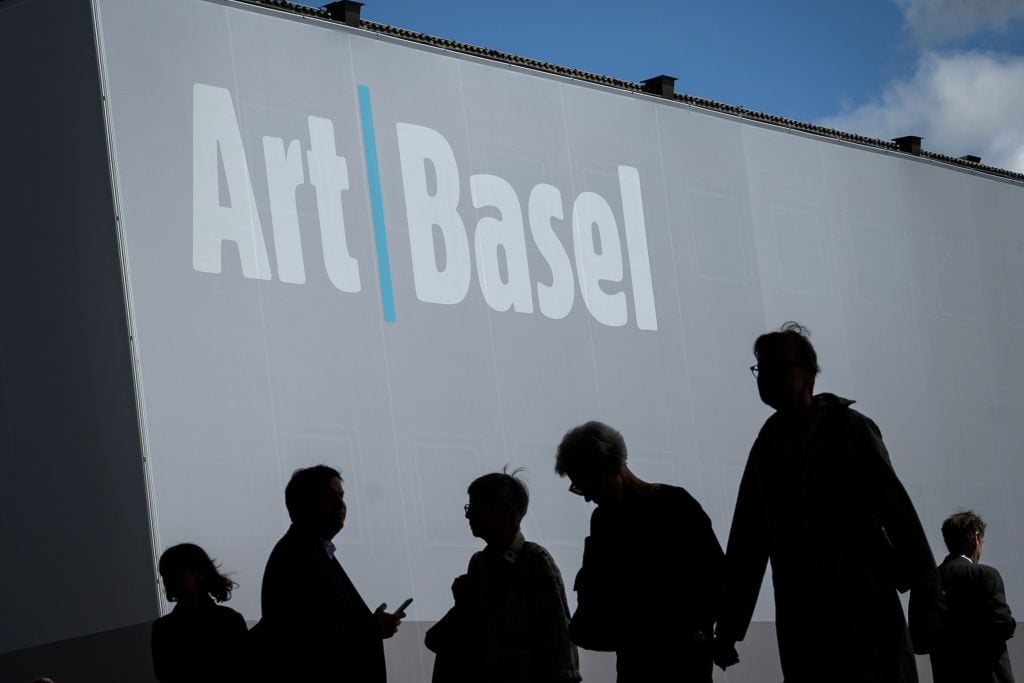Op-Ed
Opinion: With Light at the End of the Tunnel, Art Fairs Are a Risk Not Worth Taking Before Vaccinations Are Widespread
We have already figured out how to survive without fairs for nearly a year. Why squander our health now?

We have already figured out how to survive without fairs for nearly a year. Why squander our health now?

It has been almost a full year of radically changed collective behavior.
I walked through the aisles of the Armory Show in New York last March, mindful of my extremities, stopping at every restroom I passed to vigorously wash my hands for 20 seconds. I don’t remember seeing any masks at that point. Even in February, I took the subway, my wife glancing around nervously, then at me. Anyone could be infected.
The idea of viral bombardment (I keep thinking: cooties!) was still so abstract then. But two weeks after spending most of the day with a client, I received two calls: one from him, and another from the contract tracers at the clinic where he tested positive for coronavirus.
Now, 10 months after the initial New York shutdown, I’m hearing that some fairs are already planned for 2021, including Frieze New York at the Shed in Hudson Yards in May; ARCO Madrid in June; and Art Basel in September—all of which seem too soon. We know that mass gatherings are primary infection hot spots.
Art fairs—aren’t they mass gatherings?
I run Atelier 4, a complex fine-art logistics business that suddenly last March became primarily a storage company. Then, slowly, we revived our packing and crating departments, began to complete projects paused by the pandemic, found work with galleries and auction houses that had moved to online platforms, and began working closely with clients of ours who were looking at the walls of their homes and wanting something new to hang. As of the end of June, we were at 80 percent pre-Covid staffing levels. And as of year end, it looked like we could manage this disaster without a single art fair—and we did.
I don’t fault the fair owners’ wishful thinking. This is their business, and online viewing rooms cannot be enough to make up for the economic loss. But an art fair in May is a very big ask. The costs of ramping up to participate in one of these events is considerable for everyone involved. Flights, hotels, per diems, the costs of moving property and materials, renting cars—it all adds up fast. Why do all that just to have an event canceled weeks before the opening? It’s far too easy to lose non-refundable deposits, and there is no recovering time already spent.
The resources necessary to plan a fair, especially in a time of such uncertainty, are massive and inefficient. If we were to commit to Art Basel in September, we would need to ship artworks for possibly six galleries with medium-sized booths, send a contingent of art handlers and a project manager, and easily have been out of pocket over six figures with nothing to show for it. What’s more, freelancer art handlers would not get paid.
I cut my teeth on art fairs in the 1980s. For an adrenaline junkie and art handler, it was the Olympics (and also a lesson in how you’re not supposed to handle artworks—but that’s another op-ed). Many of the art-handling companies that did museum business back then avoided fairs, which created a lot of breathing room for my company. Even though we catered to institutions and other market sectors, we soon become financially reliant on fairs—especially Art Basel’s Swiss and Miami Beach editions—for huge bumps in revenue that could rectify a lackluster quarter. It was like nothing I had experienced until then.
But about ten years ago, we began to take a sober look at how art fairs were changing, and at their long-term effects on exhibitors and the industry that supports them. The benefits of these events, it turned out, are incredibly lopsided, with a few reaping massive economic rewards, while the majority either break even or hemorrhage money. For fine-art shippers in particular, increased competition has meant shrinking profit margins. In 2007, Miami Art Week included 23 events. My company threw so much money at it, it was amazing we generated any revenue.
I totally get the desire to leave your pod and interact with others. We’re social animals, and there’s nothing more social than a messy mix of dealers, collectors, curators, artists, groupies, and tourists (and oh yeah, art handlers). And economically, our industry has become enormously dependent on art fairs. But new business models have developed in the past ten months. Fine-art handlers are surviving, even the ones without storage revenue, in part because high-net-worth individuals are staying home and buying art. At Atelier 4, we’ve been able to increase our interstate trucking and art installation operations in part as a result.
But all this is done with the ability to maintain reasonable health and safety protocols. With vaccine rollouts hopefully accelerating, I’m drawing a line in the sand: We’ve already come this far without fairs. Why squander our health now when there is light at the end of the tunnel? The longer we stay in our pods, the faster we will get to the finish line.
Jonathan Schwartz CEO of Atelier 4.